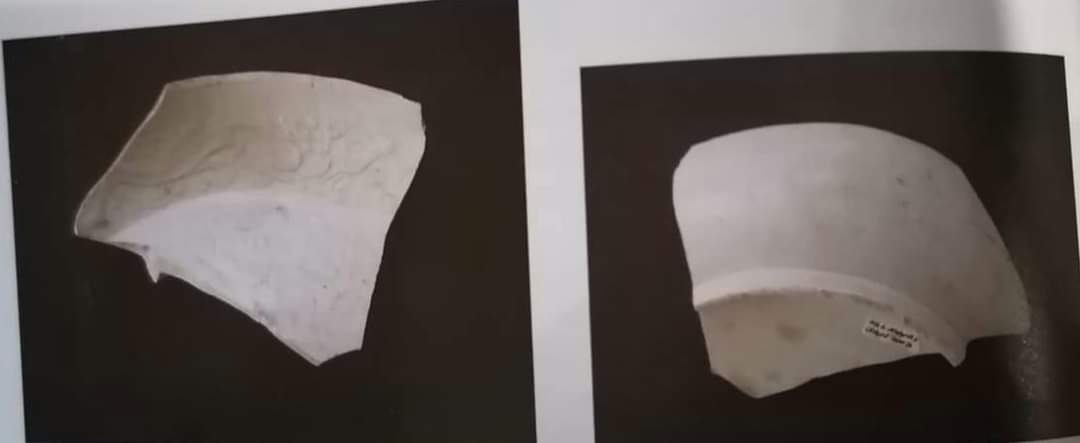
ANCIENT CERAMICS SITES EXCAVATED IN SARAWAK AND BRUNEI
Between 1948 and 1967, more than 30 sites were excavated in Sarawak under the guidance of Tom Harisson, the then curator of Sarawak museum. Since then, a further 15 sites were located and excavated. The most important sites are located at:
| Site | Location | Ceramics finds |
| Sarawak river delta sites | Santubong being identified by Prof. Cheng Te kun as a significant port in the 12th to 13th century. | Song/Yuan Chinese ceramics |
| Gedong | situates 56 miles inland at the junciton of the Batang Krang and the Sadong River. It is about 40 miles to the southeast of the Sarawak River Delta sites | Song/Yuan Chinese ceramics |
| Bukit Sandong |
Situates about 15 miles upriver from Gedong |
Song/Yuan Chinese ceramics and ceramics datable to 15th to 17th century. They includes Ming blue and white, Thai and Vietnamese ceramics. |
|
Nangka Kalaka and Tebing Tinggi in the coastal Kabong |
Situates northeast of Kuching | Song/Yuan Chinese ceramics and ceramics datable to 15th to 17th century. They includes Ming blue and white, Thai and Vietnamese ceramics. |

Some of the ceramics sherds were found were attributed to Tang Dynasty. During this period, wares from Changsha, Yue and Xing kilns are common export ceramics mix. This can be substantiated by the ceramics finds in the Belitung shipwreck. However, so far I have yet to see any sherd datable to that period. The earliest Yue wares that I have seen were produced from 5 Dynasties/Northern Song period.
Sarawak museum classifies the Chinese ceramics into 7 categories: white wares (including qingbai), Yue type (actual Yue and those that possess similar features to Yue wares), celadon (longquan wares), Temmoku (wares with dark brown or black glaze), Green glazed wares, Chizhou and Coarse Stonewares.
Since the 1990s, quite a number of shipwrecks were salvaged in the Southeast Asia sea. Coupled with more published kiln excavations reports from China, we now have the ability to provide more accurate dating and able to identify the origins of many the ceramics finds. For those Yue-type wares, we now know with certainty that they originated from Longquan and Fujian/Guangdong wares. For the so call Cizhou wares found in Southeast ASia, those from the Song period actually originated from Fujian/Guangdong. So far, archaeological evidences available showed that actual Song/Jin Cizhou wares exported were mainly only found in Korea and Japan. However, some Yuan/Ming period Cizhou wares from Hebei Pengcheng were found in Southeast Asia, especially Indonesia.
For Ming Period, the main type found is Blue and white from Jingdezhen and Fujian Zhangzhou. For more information of these types of Blue and white, please read below:
During the 15th/16th Century, Vietnamese and Thai Ceramics were exported in substantial quantity to Southeast East Asia as a result of the Ming Ban on export of Chinese ceramics. For more on these type of trade ceramics, please read below:
The site is located approximately 22km from Bandar Seri Begawan, on the bank
of Sungai Limau Manis, a tributary of the Brunei River. It was accidentally discovered in March 2002
during the government project to widen and deepen the river. The artifacts
were found at the depth of 4 to 5 metres and dating from the l0th to 14th
centuries A.D. It is the most significant and richest archaeological
findings in Brunei. Most of the artifacts that have been found were in
relatively good condition and consisted of most of the the varieties of
Song/Yuan ceramics, ie. celadon, white wares,
Qingbai, black/brown glaze and lead glazed wares. Other findings included Chinese coins,
coloured beads, wooden, iron, bronze, stone and golden objects. Small
quantity of Ming and Qing blue and white as well as Siamese and Vietnamese ware
were also found. So far, more than 50,000 ceramic shards have been collected
from the Limau Manis site. It is one of the most important archaeological
findings since Kota Batu (1950s), Sungai Lumut (1968), Terusan Kupang (1974) and
The Brunei Shipwreck (1997).
This archaeological site substantiated the information in the Chinese documented
sources of trading relationship between China and Brunei, called Po-ni, since
the Song Dynasty. According to Song
period Zhao Rushi's work "zhufanzhi" (赵汝适《诸番志》)
dated 1225, 46
countries (including Annam, Cambodia, Srivijaya, malay peninsula, Po-ni [most
likely reference to Brunei], java, eastern Indies, the Philippines and even
Zanzibar) were listed as China's trading partners. He also commented that
"Nau-tzi
(camphor) comes from Po-ni...)". The discovery provides physical
evidence of the existence of Brunei as a significant polity since the 10th
Century. The Sungai Limau Manis site declined when Kota Batu became
the capital of Brunei and a major settlement area and trade centre. It
emerged as a powerful Islamic Kingdom in the 15th and 16th centuries A.D.
Chinese Ceramics Found from the Sungai Limau Manis site
 |
 |
| 5 Dynasties/Northern Song Yue ware pot | Northern Song Yaozhou or Guangdong Xicun/Huizhou kiln Yaozhou type celadon |
 |
 |
| Northern Song Guangdong Xicun kiln brown glaze basin | Song Fujian Brown glaze ewer |
 |
 |
| Southern Song Fujian Qingbai ewer | Northern Song Fujian Celadon bowl with carved motif |
 |
 |
| Southern Song Longquan celadon bowl with carved lotus motif | Song JIngdezhen Qingbai small vase |
 |
 |
| Song/Yuan Fujian Cizao kiln lead glaze pot | Southern Song Fujian celadon bowl |
 |
 |
| Yuan JIngdezhen Qingbai bowl | Yuan Longquan celadon bowl |
 |
 |
| Yuan Longquan celadon bowl | Yuan Fujian Qingbai ewer |
 |
 |
| Song/Yuan Fujian Cizao Kiln lead glaze Kendis | Yuan Fujain Cezao kiln brown glaze bottle |
 |
 |
| Yuan Dehua White glaze vase | Song Guangdong brown glaze Kendi |

Northern Song Ding shard with molded decoration
by: NK Koh (28 Jul 2015)